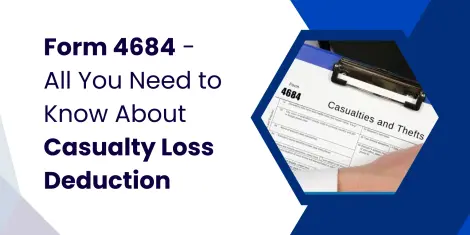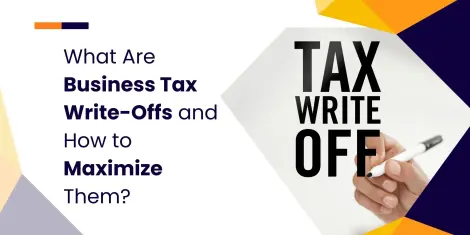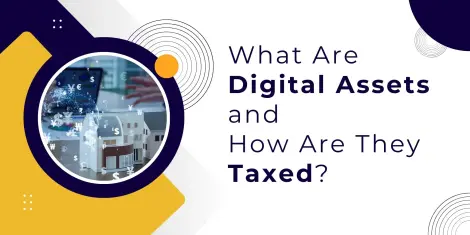Table of Contents
Tax planning is an important part of a smart financial strategy. It helps you take advantage of tax deductions, credits, and other benefits to reduce the amount of taxes you owe and increase your refund. Proper tax planning requires an understanding of your current financial situation, knowledge of how different factors influence your taxes, and awareness of the recent tax codes that impact your tax filing process. As the tax season approaches, it is an ideal time to explore some key tax planning techniques to optimize your tax position. Here’s a detailed overview of key concepts related to tax refunds and tax planning, effective strategies, and a tax planning checklist to maximize your 2024 tax refund:
Understanding Tax Refunds
A tax refund is a repayment of excess taxes that you paid during the year. When you file your annual tax return, you calculate the total tax you owe based on your income, deductions, and other factors. The amount of tax that was withheld from your paycheck or paid through estimated quarterly tax payments is then compared to the total tax owed. If the amount already paid exceeds the amount owed, the difference is returned to you as a tax refund. In simple terms, your tax refund occurs when you overpay your taxes during the year.
The size of your tax refund will depend on the following key factors:
Total Income - The total income you earn from all sources determines your taxable income and tax liability. The higher your income, the higher your tax liability is likely to be. If your income increased during the year but your withholdings stayed the same, you may receive a smaller refund or owe additional taxes. On the other hand, if your income decreased but withholdings remained level, you may get a larger refund.
Deductions and Credits- The number and types of tax deductions and tax credits you qualify for can significantly affect your tax refund amount. Deductions and credits directly lower your taxable income or tax liability. Common deductions include mortgage interest, charitable donations, medical expenses, and work-related expenses. Tax credits such as the child tax credit, education credits, and energy credits can also reduce your tax bill and increase your refund.
Tax Withholding- The amount of taxes already paid to the IRS through payroll withholding and estimated tax payments directly impact your tax refund. If you had much tax withheld from your paycheck based on your actual tax liability, you will likely get a refund. On the other hand, if you did not have enough withheld, you may owe additional tax and get a smaller refund.
Overall Tax Situation- Your overall tax situation, including your tax bracket and marital status, affects your tax refund. Your tax bracket determines your marginal tax rate, so the higher your bracket, the larger the portion of income paid in taxes. Getting married also changes your tax situation, often resulting in a larger refund if there is a disparity in incomes.
Carryovers and Losses- Carryovers or losses from previous tax years can be applied to your current year tax return to reduce your taxable income and increase your refund. Some examples include capital loss carryovers, passive activity losses, and net operating losses. Accounting properly for past losses can provide significant tax savings in the current year.
What are the Key Tax Planning Strategies
Implementing a strategic tax plan tailored to your situation sets you up for optimal tax outcomes. Determining the right approach requires careful consideration of your short and long-term financial goals, assessing potential tax liabilities, and finding ways to minimize your tax burden. Here are the key tax planning strategies to help you increase your tax refunds:
Leverage Eligible Tax Deductions and Credits
The tax code provides two major ways for you to reduce your tax liability and increase refunds - deductions and credits. Utilizing available deductions and credits through proper tax planning allows you to minimize your taxes owed and maximize your refund.
Tax Deductions
Tax deductions lower the amount of income that is actually subject to tax. There are two main types of individual tax deductions - standard deduction and itemized deductions.
Itemized deductions vs standard deduction
The standard deduction provides a fixed amount that filers can deduct from their income before calculating tax owed, based on their filing status. For 2023, the standard deduction amounts are $13,850 for single filers and $27,700 for married couples filing jointly. Choosing the standard deduction simplifies filing by reducing taxable income without the need to track and tally deductible expenses throughout the year. However, if your total eligible itemized deductions exceed the standard deduction amount for your filing status, you can itemize deductions instead to reduce your taxable income.
Itemized deductions allow you to write off specific expenses that the tax code permits. If you itemize, you deduct the actual amount of allowable expenses rather than claiming the standard deduction. Major itemizable deductions include:
Mortgage Interest Deduction- It allows homeowners to deduct interest paid on mortgage debt used to purchase, build, or improve a primary residence and second home. Interest can be deducted on total mortgage debt up to $750,000 ($375,000 for married filing separately).
Read more: All you need to know about Mortgage Interest Tax Deduction
State and Local Tax (SALT) Deduction - It allows taxpayers to deduct state and local taxes paid from their federal taxable income. The total SALT deduction is capped at $10,000 per tax return. Married couples filing separately are limited to $5,000 each.
Medical Expense Deduction - Taxpayers can deduct unreimbursed medical and dental expenses that exceed 7.5% of their adjusted gross income for the year. Qualified expenses include health insurance premiums, doctor visits, hospital and nursing care, prescription drugs, medical devices and equipment, dental and vision care.
Read more about Medical Expenses Deduction here.
Charitable Donation Deduction - Taxpayers who donate money or property to qualified tax-exempt 501(c)(3) public charities can claim an itemized deduction for those gifts. The maximum deduction is limited to 60% of the taxpayer's adjusted gross income for cash donations and 30% of AGI for non-cash donations of appreciated assets.
Casualty and Theft Loss Deduction- Taxpayers who suffer unreimbursed damage or loss of personal use property due to a sudden event like natural disaster, accident, theft, vandalism, or fraud can claim an itemized deduction for those losses. The deductible amount must exceed 10% of the taxpayer's adjusted gross income for the year.
Tax Credits
While deductions lower taxable income, tax credits directly reduce your actual tax liability dollar-for-dollar. Credits provide greater tax savings than deductions of an equal amount. Major tax credits include:
Child Tax Credit - the child tax credit allows eligible parents to reduce their federal income tax by up to $2,000 for each qualifying child under age 17. To qualify, the child must be a US citizen or resident alien and claimed as a dependent on the tax return. The credit amount begins to phase out at higher income thresholds.
Child and Dependent Care Credit - Taxpayers who pay for qualified care for dependents under age 13 or disabled dependents while working or studying can claim this credit. It covers 20-35% of allowable expenses up to $3,000 for one qualifying dependent or $6,000 for two or more. Eligible expenses include daycare, preschool, summer camps, and in-home care.
Earned Income Tax Credit- The earned income tax credit EITC benefits low to moderate income workers and provides greater benefits for families with children. The credit amount depends on income, marital status, and number of qualifying children. The EITC is a refundable credit, meaning recipients receive a payment from the IRS if the credit exceeds their income tax liability.
Education Credits- The American Opportunity Credit provides up to $2,500 per year for qualified undergraduate education expenses like tuition, fees, books, supplies and equipment. Up to $1,000 is refundable. The Lifetime Learning Credit offers up to $2,000 per tax return for any level of postsecondary education and training courses to acquire or improve job skills.
Residential Energy Credits- Homeowners who install qualifying energy-efficient equipment in their primary residence like solar panels, solar water heaters, geothermal heat pumps, small wind turbines, and fuel cells can receive tax credits up to 30% of the system cost installed between 2022-2032.
Electric Vehicle Credit- Purchasers of new qualifying electric, plug-in hybrid electric, and hydrogen fuel cell vehicles can receive an income tax credit of up to $7,500 depending on battery capacity, gross vehicle weight rating, and related factors. Used EVs, PHEVs, and FCVs also qualify but at lower credit amounts ($4000) to incentivize clean vehicle adoption.
Be sure to understand which deductions and credits you may qualify for. Track deductible expenses, make qualified purchases, and time your income and expenses strategically. Using deductions and credits strategically through thoughtful planning allows you to lower your tax bill and boost your refund.
Maximize Your Workplace Benefits
Adjusting your employee benefit selections can directly impact your tax situation. Here are two ways to leverage your workplace benefits for maximum tax savings:
Employer-Sponsored Retirement Plans- Contributing to an employer retirement plan like a 401(k) or 403(b) allows you to save for the future while lowering your taxable income. Your contributions come out of your paycheck pre-tax. For 2024, you can contribute up to $22,500 to a 401(k), with an additional $7,500 catch-up contribution if age 50 or older. This immediately lowers your taxable income by the amount contributed.
Health Savings Accounts (HSAs) and Flexible Spending Accounts (FSAs)- If your employer offers an HSA or FSA, you can use pre-tax dollars to pay for qualified medical expenses, reducing your taxable income. HSA contribution limits for 2024 are $3,850 for individuals and $7,750 for families, plus a $1,000 catch-up contribution if 55 or older. FSA limits are set by the employer, typically $3,050 annually. Maxing out an HSA and/or FSA can lead to a larger tax refund, assuming your medical expenses exceed the pre-tax amounts set aside.
Capitalize on Education-Related Tax Benefits
There are several tax benefits available related to education expenses that can reduce your tax liability. The most common benefits include:
529 Plans- These state-sponsored, tax-advantaged savings plans can be used to pay for future education expenses. 529 plan contributions grow tax-deferred and withdrawals are tax-free when used for qualifying education expenses. Contributing to a 529 plan will not lower your 2024 taxes, but the assets can grow tax-free and help pay for college in the future tax-free.
Student Loan Interest Deduction- If you're paying off student loans, you may be able to deduct up to $2,500 in student loan interest paid during 2024 if your income is below $85,000 (single) or $175,000 (married filing jointly).
Realize Your Homeownership Advantages
Owning your home opens up valuable tax deductions that can lower your tax bill and increase refunds. As a homeowner here are two valuable deductions you can avail:
Energy Efficient Home Improvement Credit - Homeowners who complete certain qualified energy-saving improvements on their primary residence can claim 30% of costs for eligible projects like installing insulation, energy-efficient doors and windows, water heaters, furnaces, and more, up to an annual limit of $1,200.
New Energy Efficient Home Credit - Builders of new, highly energy-efficient homes can claim a tax credit ranging from $500 to $5,000 depending on the home's efficiency certified by a qualified organization. The credit applies to homes completed between 2023 and 2032 with energy savings of at least 50% relative to the 2006 International Energy Conservation Code.
Year-End Tax Planning Checklist
As April 15th approaches, there are certain last-minute moves you can make to reduce your tax liability or increase your tax refunds. Here is the key year-end tax planning checklist to address:
Review Income and Expenses
- Look for any additional sources of taxable income you may have forgotten, like freelance work or investment income. Consider strategies to defer that income to 2025 if possible.
- Identify any remaining expenses you can prepay in 2024 to increase your deductions, like 2025 rent or estimated state taxes.
Utilize Tax-Efficient Investing Strategies
- Review investments to harvest any capital losses to offset capital gains realizations.
- Avoid selling investments with large accumulated gains that would incur significant capital gains taxes.
- Contribute to a health savings account (HSA) if eligible, to benefit from deductible contributions and tax-free growth
Make Last-Minute Contributions
- Max out any remaining 401(k), IRA, HSA, or FSA contributions for 2024. For 401(k) plans, the 2024 contribution deadline is December 31, 2024. However, you typically have until April 15, 2025 (when you file your 2024 return) to make 2024 IRA contributions.
- If itemizing deductions, take advantage of the charitable deduction by making last-minute donations to qualified charities. You can also prepay certain 2025 donations if you can avail receipts.
Potential Pitfalls and Misconceptions
While tax planning done right can help optimize your tax position, understanding common pitfalls and misconceptions allows you to maximize refunds and avoid compliance issues. Key pitfalls include:
Getting Extremely Large Refunds- While a bigger tax refund sounds positive, it likely means you had far too much tax withheld from your paycheck throughout the year. Adjust your Form W-4 withholdings to get more in your paycheck instead of a huge refund.
Failing to Take Rightful Deductions/Credits- Don't let fear of an audit stop you from taking tax deductions or credits you legitimately qualify for. Just be sure to maintain proper documentation like receipts and written records to validate expenses if reviewed.
Expecting Immediate Refund Payment -Refunds will not appear in your bank account right after filing. It takes the IRS time to process tax returns - typically within 3 weeks if you file electronically and arrange direct deposit. Mailing paper returns extends the wait.
Some Common Misconceptions include:
High Income Earners Always Owe Taxes- Higher incomes lead to higher taxes, but top earners can still get refunds. Income fluctuations, withholding differences, deductions like SALT caps, and tax credits can result in overpayment and refunds due for wealthy filers.
Only People Getting Refunds Need to File- All taxpayers above income filing thresholds must file returns yearly, regardless of whether they'll owe, get a refund, or break even. You must report income, calculate taxes, and submit required returns. Failing to file when required leads to penalties.
Refunds Reduce Your Tax Bill- Tax refunds don't directly lower your tax amount owed. They return overpayments collected via withholding on income earned. Cutting your tax liability requires deductions, credits, and adjustments lowering taxable income/tax due. Refunds simply reimburse excess taxes paid.
Understanding the Recent Changes in Tax Laws and Regulations
Reviewing the key updates in the tax code can uncover ways to reduce your liability and help you maximize refunds. Here are some key changes to the tax laws:
Reversion of Expanded Pandemic Tax Credits
- The Child Tax Credit has been reduced from up to $3,600 back down to $2,000 per child. Only $1,600 of it is refundable for most families.
- The Child and Dependent Care Credit maximum has decreased from up to $8,000 to $2,100 per family. It is no longer fully refundable.
- The Earned Income Tax Credit remains expanded, but the eligibility age increased from 19 to 25 for workers without dependents.
New Tax Credits and Incentives
- The Inflation Reduction Act introduces new credits for electric vehicles, solar panels, and home energy efficiency upgrades.
- The EV credit is now up to $7,500 for more vehicle models. A credit for Used EVs up to $4,000 is also available.
- The home energy credit increased to 30% for qualified energy-saving house improvements.
- The Section 179D deduction is extended for commercial building energy upgrades.
Other Impactful Changes
- Higher limits for retirement account contribution
- Increased limits for standard mileage rate and Health Savings Account
Staying current with all legislative changes pertaining to credits, deductions, and incentives can reveal significant tax saving opportunities this year.
Check our latest blog A Complete Guide to Understanding Recent Changes in US Tax Law to learn how the recent changes can help you maximize tax refunds.
Conclusion
While effective tax planning is crucial for optimizing your tax situation, managing changing tax codes, deductions, credits, forms, and deadlines can be intimidating. Consulting with professional tax experts like NSKT can help you develop a personalized tax strategy for maximized refunds. Our team of experienced CPAs stay current with the latest tax codes, reducing taxable income through proper deductions, accurately claiming all eligible credits you qualify for, and ensuring full compliance with IRS regulations.
The information provided here is for general informational purposes only and should not be construed as professional advice. The tax-related content on this blog is based on our understanding of tax laws as of the date of publication and may be subject to change.







